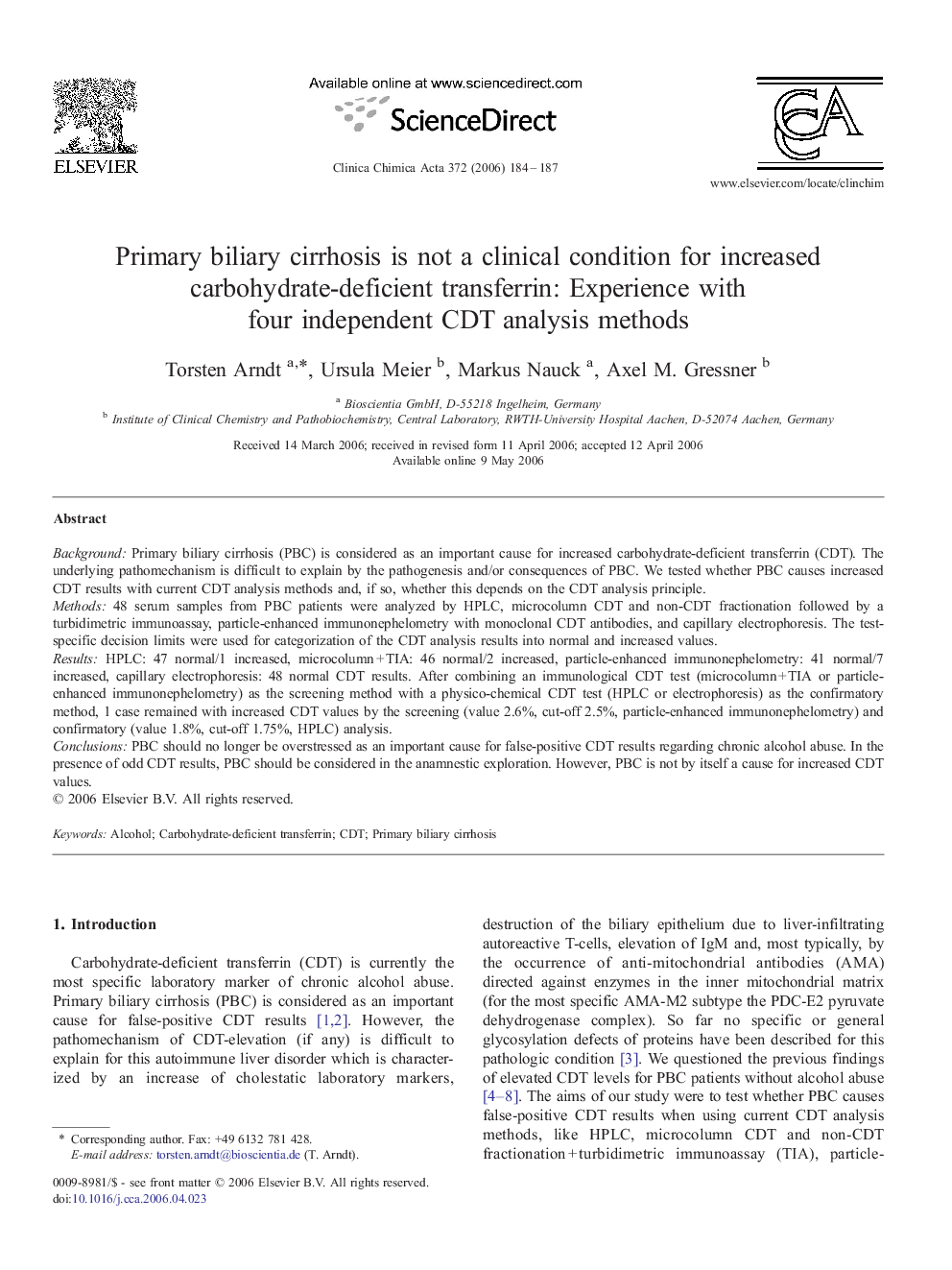| Article ID | Journal | Published Year | Pages | File Type |
|---|---|---|---|---|
| 1967754 | Clinica Chimica Acta | 2006 | 4 Pages |
BackgroundPrimary biliary cirrhosis (PBC) is considered as an important cause for increased carbohydrate-deficient transferrin (CDT). The underlying pathomechanism is difficult to explain by the pathogenesis and/or consequences of PBC. We tested whether PBC causes increased CDT results with current CDT analysis methods and, if so, whether this depends on the CDT analysis principle.Methods48 serum samples from PBC patients were analyzed by HPLC, microcolumn CDT and non-CDT fractionation followed by a turbidimetric immunoassay, particle-enhanced immunonephelometry with monoclonal CDT antibodies, and capillary electrophoresis. The test-specific decision limits were used for categorization of the CDT analysis results into normal and increased values.ResultsHPLC: 47 normal/1 increased, microcolumn + TIA: 46 normal/2 increased, particle-enhanced immunonephelometry: 41 normal/7 increased, capillary electrophoresis: 48 normal CDT results. After combining an immunological CDT test (microcolumn + TIA or particle-enhanced immunonephelometry) as the screening method with a physico-chemical CDT test (HPLC or electrophoresis) as the confirmatory method, 1 case remained with increased CDT values by the screening (value 2.6%, cut-off 2.5%, particle-enhanced immunonephelometry) and confirmatory (value 1.8%, cut-off 1.75%, HPLC) analysis.ConclusionsPBC should no longer be overstressed as an important cause for false-positive CDT results regarding chronic alcohol abuse. In the presence of odd CDT results, PBC should be considered in the anamnestic exploration. However, PBC is not by itself a cause for increased CDT values.
